 |
 |
 |
| |
Choice and Adherence to Dapivirine Ring or Oral PrEP
by Young African Women in REACH: 67% prefer ring vs 31% oral PrEP
|
| |
| |
Kenneth Ngure PhD
Jomo Kenyatta University (JKUAT), Nairobi, Kenya
University of Washington, Seattle, USA
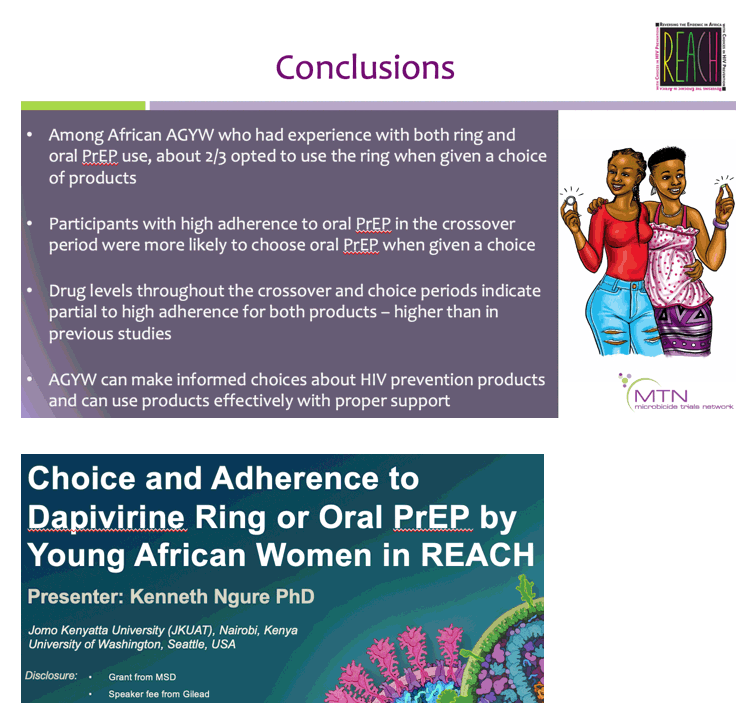
program abstract
Background:
Adolescent girls and young women (AGYW) account for most new HIV acquisitions in Africa. WHO has recommended oral PrEP and the monthly dapivirine vaginal ring (ring) for women at risk of HIV acquisition. Given the need for high adherence for effectiveness and lower adherence among AGYW in efficacy trials, we assessed choice of and adherence to the ring and oral PrEP among African AGYW in the MTN-034/REACH crossover trial.
Methods:
REACH enrolled 247 HIV-negative, non-pregnant AGYW ages 16-21 from South Africa, Zimbabwe, and Uganda from February 2019 to April 2021. Participants were randomized to the monthly ring or daily oral tenofovir disoproxil fumarate/emtricitabine (TDF/FTC) for the first 6 month period, then switched to the other product for the second 6 month period. Participants were given a choice of ring, oral PrEP, or neither in the third 6 month period. Adherence was measured by residual drug levels in returned used rings and dried blood spots (DBS) for oral PrEP, and is shown by proportion of visits. Dapivirine (DPV) release of <0.9mg indicate non-use, 0.9 to >4.0mg some use, and ≥4.0mg consistent with 28 days of use. Tenofovir diphosphate (TFV-DP) levels of <16 fmol/DBS punch indicates no use, 16-700 fmol/punch moderate and ≥700 fmol/punch high adherence. The proportion of visits with high adherence was compared between the cross-over and choice periods for each product.
Results:
Participants' average age was 18 years, and of 227 (92%) who continued in the choice period, 152 (67%) chose the ring, 71 (31%) oral PrEP, and 4 (2%) neither. Randomization sequence in the crossover period did not influence product choice. Residual DPV levels in used rings and TFV-DP levels in DBS showed participants had some to high use of the ring and moderate to high adherence to oral PrEP with <5% of visits with no adherence (Figure 1). High adherence to oral PrEP in the crossover period was strongly associated with choice of oral PrEP (p<0.001); an association was not observed for rings (p=0.85).
Conclusion:
In the choice period among African AGYW who had 6 months use of both the ring and oral PrEP, 2/3 opted to use the ring; those with high adherence to oral PrEP in the crossover periods were likely to choose oral PrEP. Drug levels indicate partial to high adherence to both the ring and oral PrEP, higher than in prior studies. AGYW can make informed choices about HIV prevention products and are motivated to continue to use a product of their preference after previous oral PrEP or ring use.
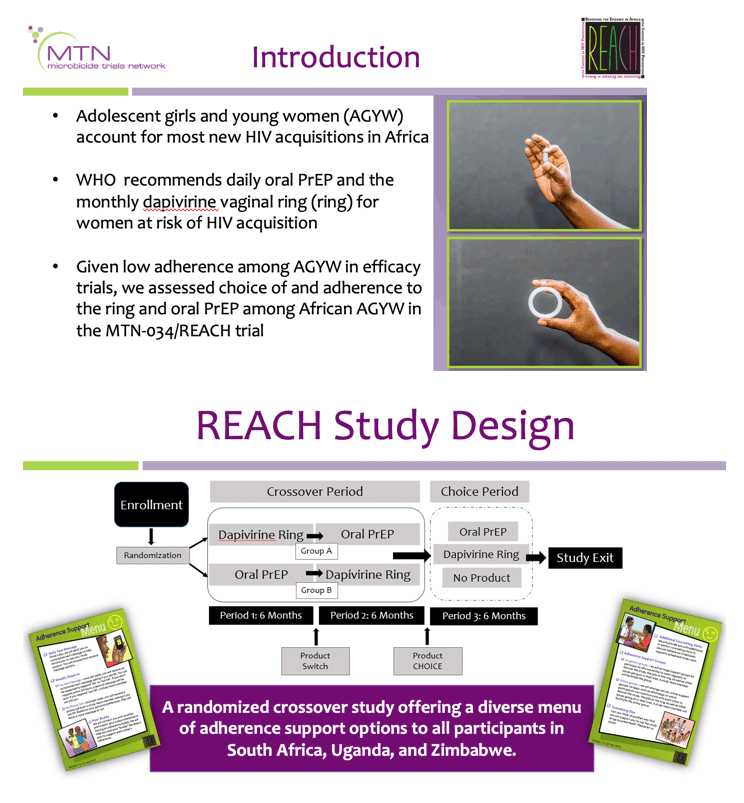
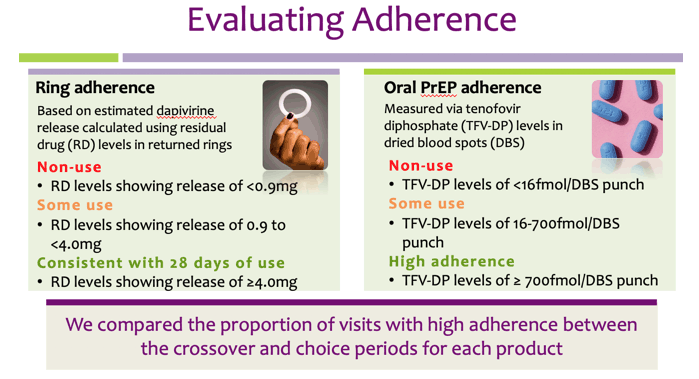
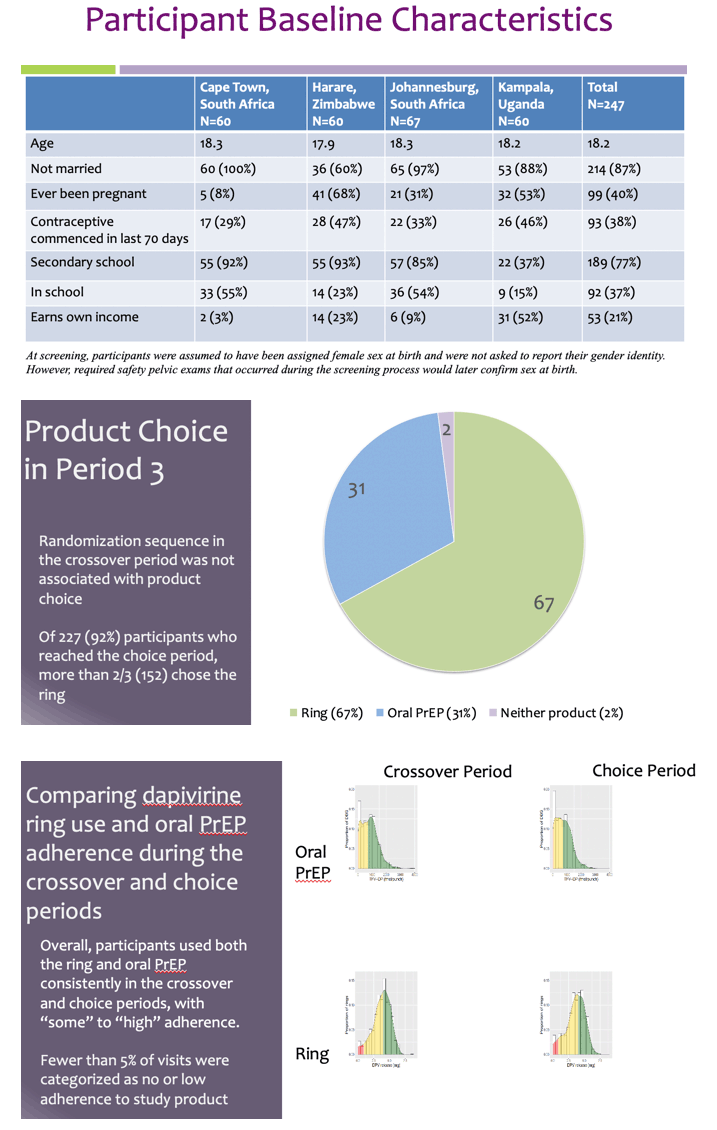
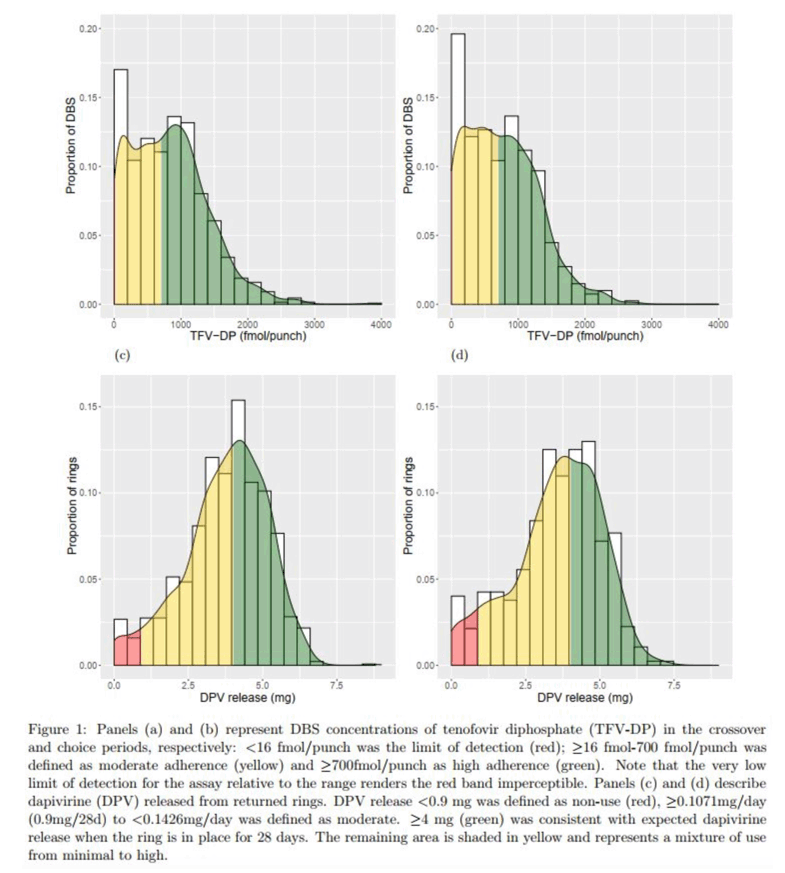
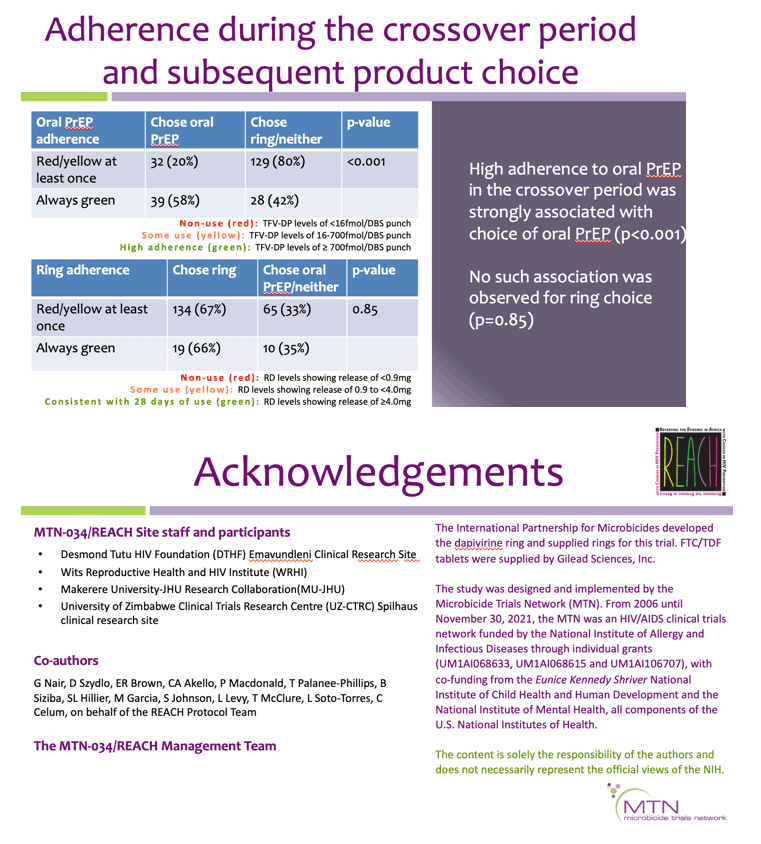
|
| |
|
 |
 |
|
|